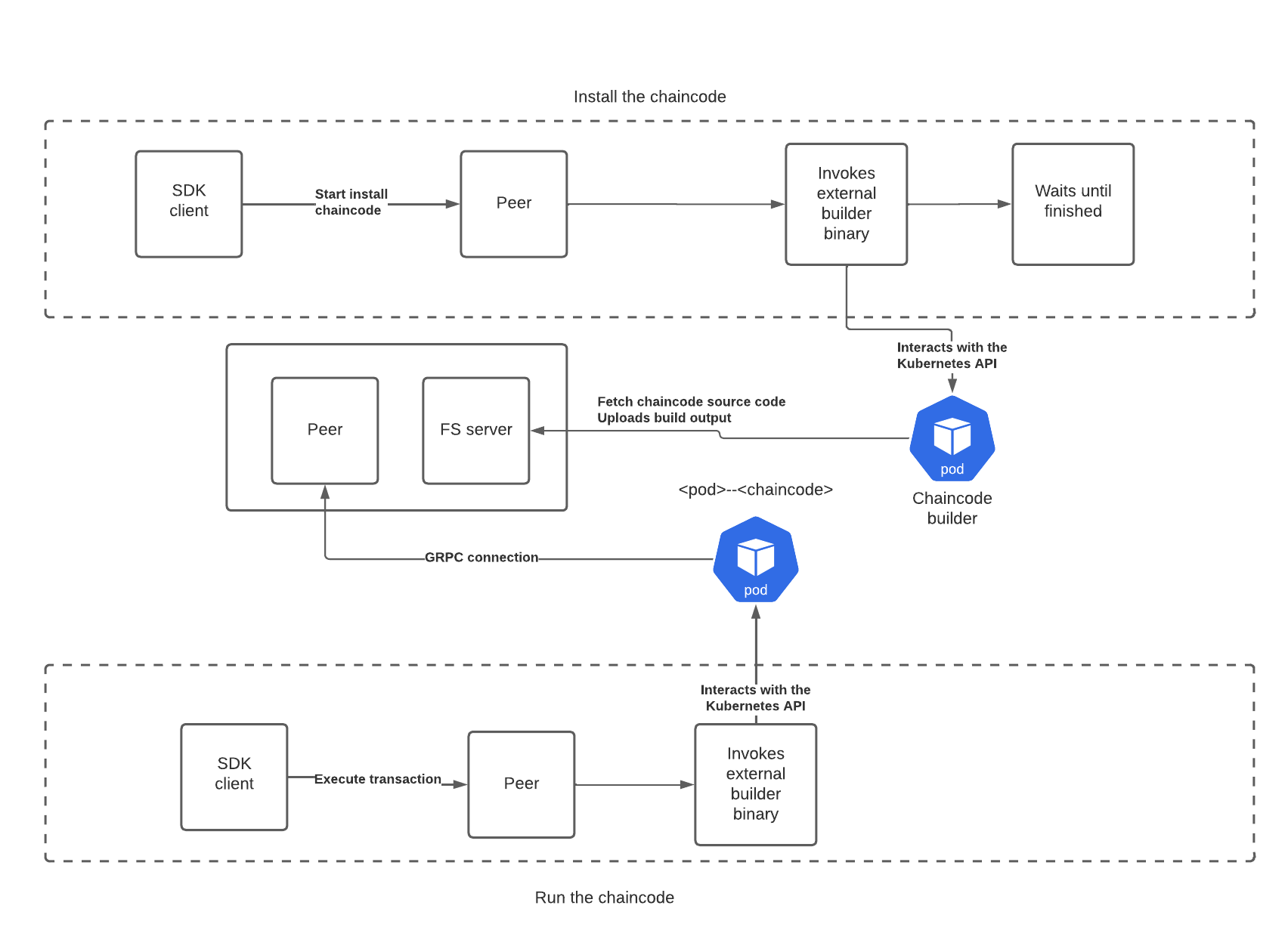External chaincode as a service
Fabric 2.0 enabled the ability to deploy chaincode as a service. This is a chaincode that runs on a remote machine, container, or baremetal, and the peer will connect to it.
HLF-operator supports the installation of chaincode as a service, using the ccaas external builder that Hyperledger Fabric supports out-of-the-box since the version 2.4.1

Step 1: Prepare a Docker image for the chaincode
To deploy the chaincode in Kubernetes, we need to prepare a Docker image that has the chaincode in it.
You can use the following code as a baseline: https://github.com/hyperledger/fabric-samples/tree/main/chaincode/fabcar/external
It contains a Dockerfile and a fabcar.go, if you build that folder:
docker build -t <username>/chaincode .
And then push it to Docker Hub:
docker push <username>/chaincode
You will be able to deploy the chaincode in the step 3
Step 2: Install the chaincode
In this step we will install the chaincode using the ccaas external builder, telling the address of the chaincode service where the chaincode will be deployed.
# remove the code.tar.gz asset-transfer-basic-external.tgz if they exist
rm code.tar.gz asset-transfer-basic-external.tgz
export CHAINCODE_NAME=asset
export CHAINCODE_LABEL=asset
cat << METADATA-EOF > "metadata.json"
{
"type": "ccaas",
"label": "${CHAINCODE_LABEL}"
}
METADATA-EOF
cat > "connection.json" <<CONN_EOF
{
"address": "${CHAINCODE_NAME}:7052",
"dial_timeout": "10s",
"tls_required": false
}
CONN_EOF
tar cfz code.tar.gz connection.json
tar cfz asset-transfer-basic-external.tgz metadata.json code.tar.gz
export PACKAGE_ID=$(kubectl hlf chaincode calculatepackageid --path=asset-transfer-basic-external.tgz --language=node --label=$CHAINCODE_LABEL)
echo "PACKAGE_ID=$PACKAGE_ID"
kubectl hlf chaincode install --path=./asset-transfer-basic-external.tgz \
--config=org1.yaml --language=golang --label=$CHAINCODE_LABEL --user=admin --peer=org1-peer0.default
# this can take 3-4 minutes
Step 3: Deploy the chaincode
In this last step, we will deploy the chaincode using the ccaas external builder, specifying the name of the chaincode, which must be the same as we specified in the previous step.
And we will also specify the image which you have pushed in the first step.
kubectl hlf externalchaincode sync --image=<username>/chaincode:latest \
--name=$CHAINCODE_NAME \
--namespace=default \
--package-id=$PACKAGE_ID \
--tls-required=false \
--replicas=1